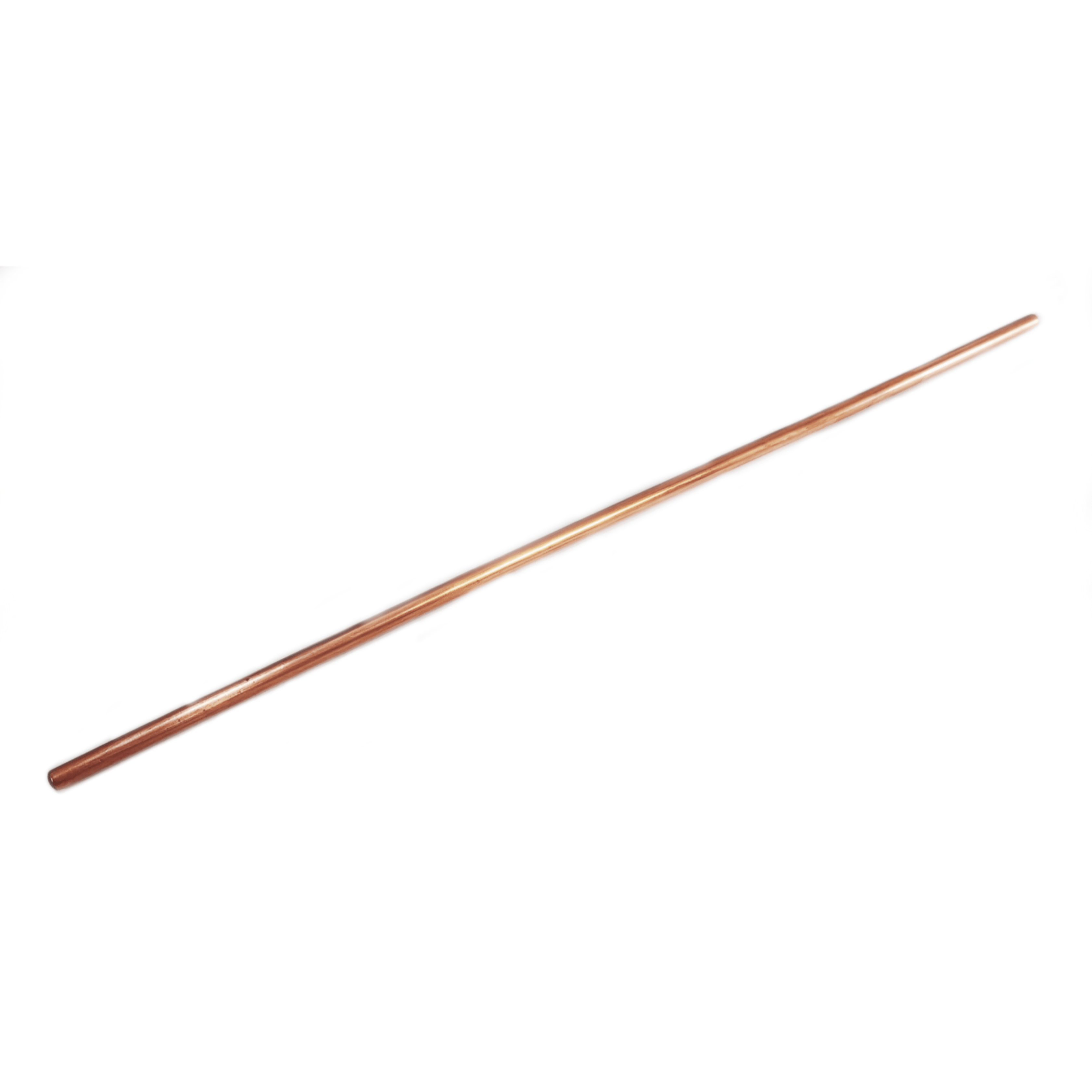
Thermistance is the first Indian start-up completely devoted to develop advanced passive cooling technologies and its commercialization. Our world class team is continuously working to develop innovative micro and miniature cooling devices. We are also developing our research and development centre in Pune.

Thermosyphons are devices that make the best use of the limitless resource of gravity for thermal management. They are passive heat transfer devices, assisted by gravity in their function, due to the lack of a capillary structure, as in a Heat Pipe. Their simplicity in construction, function, and maintenance make them a remarkable source of passive cooling technology. They are effective and convenient in transferring a large amount of heat with a small temperature difference.
1. Coolant:The main element of the Thermosyphon is the coolant, which incessantly transfers heat from the source to the outlet.
2. Cylinder water jacket: : This is a cylinder that contains the working fluid or the coolant. When heated, there is the movement of the hot and cold fluid to the top and bottom of the cylinder respectively.
3. Upper tank: : This pools the liquid at the top part of the radiator, enabling its flow down the streamlines.
4. Upper pipe: : This connects the top part of the cylinder to the upper tank, enabling the movement of hotter fluid.
5. Radiator: These are made up of several lines through which the hotter fluid flows and is exposed to the cooling effect of the fan.
6. Fan: The radiator is connected to a fan, which sucks the heat energy off the radiator. Multiple lines are used in the radiator, to increase the surface area exposed to this cooling effect.
7. Lower tank: The cooled liquid is accumulated in the lower tank before it reaches the cylinder.
8. Lower pipe:This pipe connects the lower tank to the cylinder water jacket.
1. Convection: This physical property is responsible for the self-movement of the fluid in the cylinder water jacket, creating segregation of hotter, less dense fluid at the top and cooler, denser fluid at the bottom.
2. Radiator function: : The cooling effect produced by the fan at the radiator section is responsible for the dissipation of heat to the heat sink, while the fluid is only a carrier of heat.
Heat source heats the working fluid in the cylinder water jacket. The hotter working fluid becomes less dense and moves to the top of the cylinder by convection. Through the upper pipes, this hotter fluid is transported to the upper tank of the radiator.
As the hotter fluid passes through the radiator, the fans cool the fluid down and extract the heat energy from the fluid, and delivers it to the outlet. This cooled down working fluid enters the lower tank.
From the lower tank, the working fluid is transported to the cylinder water jacket where it settles in the bottom, the reason being, cooler fluids are denser. This working fluid on exposure to more heat moves to the upper part and the cycle continues.
1. High thermal conductivity: Since there are very minimal pressure and temperature losses, Thermosyphons prove to have very efficient thermal conductivity.
2. No external pumping required: The working fluid has the ability to self organize and self circulate in the Thermosyphon, thus eliminating the need for an external pumping mechanism to enable its movement.
3. No moving parts: Having no moving parts results in lesser wear and tear, longevity, and low maintenance.
4. Simple to manufacture: They have a simple construction and hence easier to manufacture.
5. Low cost: They have a simple construction and hence easier to manufacture.
1. Solar heating systems: Infinite energy sources from the sun can be harvested by the effective outlay of solar panels but there is a question of heat transfer from the sun. The passive heat transfer from the sun to the solar power panels can be relayed by Thermosyphons.
2. Computers: Many of the internal components of computer systems, like processors, generate heat. Sometimes the heat becomes so paramount that it causes malfunctioning of the processor. Using Thermosyphons, processors can be cooled down.
3. Automobiles: Automobile engines generate a lot of heat energy while running, and their cooling needs differ according to the speed of the engine. Thermosyphons with radiators can be fitted in such places that can effectively dissipate the heat energy from the engine to the environment.
4. Transformers: While converting voltages for supply, transformers are subjected to a lot of heat generation due to iron loss, copper loss. Fitting a Thermosyphon to them can manage this heat loss.
1. Coolant:The main element of the Thermosyphon is the coolant, which incessantly transfers heat from the source to the outlet.
2. Cylinder water jacket: : This is a cylinder that contains the working fluid or the coolant. When heated, there is the movement of the hot and cold fluid to the top and bottom of the cylinder respectively.
3. Upper tank: : This pools the liquid at the top part of the radiator, enabling its flow down the streamlines.
4. Upper pipe: : This connects the top part of the cylinder to the upper tank, enabling the movement of hotter fluid.
5. Radiator: These are made up of several lines through which the hotter fluid flows and is exposed to the cooling effect of the fan.
6. Fan: The radiator is connected to a fan, which sucks the heat energy off the radiator. Multiple lines are used in the radiator, to increase the surface area exposed to this cooling effect.
7. Lower tank: The cooled liquid is accumulated in the lower tank before it reaches the cylinder.
8. Lower pipe:This pipe connects the lower tank to the cylinder water jacket.
1. Convection: This physical property is responsible for the self-movement of the fluid in the cylinder water jacket, creating segregation of hotter, less dense fluid at the top and cooler, denser fluid at the bottom.
2. Radiator function: : The cooling effect produced by the fan at the radiator section is responsible for the dissipation of heat to the heat sink, while the fluid is only a carrier of heat.
Heat source heats the working fluid in the cylinder water jacket. The hotter working fluid becomes less dense and moves to the top of the cylinder by convection. Through the upper pipes, this hotter fluid is transported to the upper tank of the radiator.
As the hotter fluid passes through the radiator, the fans cool the fluid down and extract the heat energy from the fluid, and delivers it to the outlet. This cooled down working fluid enters the lower tank.
From the lower tank, the working fluid is transported to the cylinder water jacket where it settles in the bottom, the reason being, cooler fluids are denser. This working fluid on exposure to more heat moves to the upper part and the cycle continues.
1. High thermal conductivity: Since there are very minimal pressure and temperature losses, Thermosyphons prove to have very efficient thermal conductivity.
2. No external pumping required: The working fluid has the ability to self organize and self circulate in the Thermosyphon, thus eliminating the need for an external pumping mechanism to enable its movement.
3. No moving parts: Having no moving parts results in lesser wear and tear, longevity, and low maintenance.
4. Simple to manufacture: They have a simple construction and hence easier to manufacture.
5. Low cost: They have a simple construction and hence easier to manufacture.
1. Solar heating systems: Infinite energy sources from the sun can be harvested by the effective outlay of solar panels but there is a question of heat transfer from the sun. The passive heat transfer from the sun to the solar power panels can be relayed by Thermosyphons.
2. Computers: Many of the internal components of computer systems, like processors, generate heat. Sometimes the heat becomes so paramount that it causes malfunctioning of the processor. Using Thermosyphons, processors can be cooled down.
3. Automobiles: Automobile engines generate a lot of heat energy while running, and their cooling needs differ according to the speed of the engine. Thermosyphons with radiators can be fitted in such places that can effectively dissipate the heat energy from the engine to the environment.
4. Transformers: While converting voltages for supply, transformers are subjected to a lot of heat generation due to iron loss, copper loss. Fitting a Thermosyphon to them can manage this heat loss.